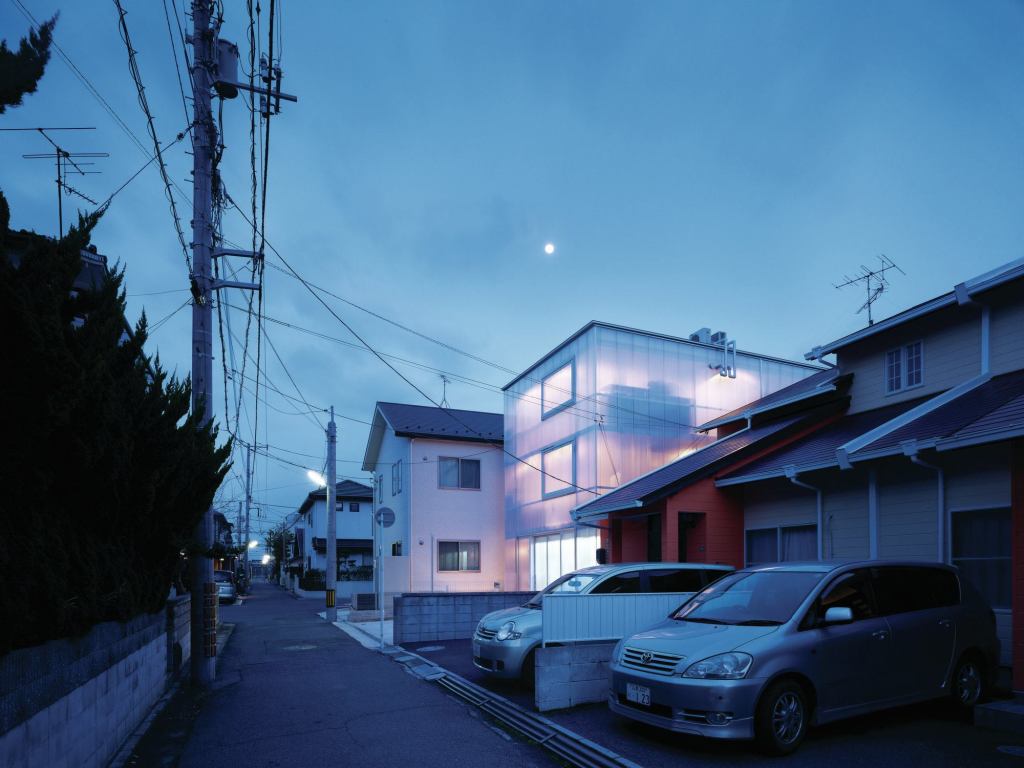Polycarbonate is one of those materials that can be found in just about anything, be it a golf cart, CD, or blender. And while the construction industry is one of the largest consumers of the polymer, it is rare to find a project that showcases it more thoroughly than the House in Tousuien in Hiroshima, Japan. Usually an accent panel, or the stuff of skylights, in this house for a couple and their three children on an infill lot, polycarbonate essentially is the house—forming the entirety of the exterior cladding for the three-story structure.
The architects at Suppose Design Office turned to the material because “we tried find the best materials within the budget, while keeping it fun and creative,” says project architect Makoto Tanijiri, who founded the Hiroshima- and Tokyo-based firm in 2000. The material was cost effective, but also addressed other concerns that were important to the clients—in part, because “it softens natural light while providing a sense of privacy,” Tanijiri says.
The translucent walls allow the minimalist interior—the steel structure is lined with warm wood floors—to be flooded with ambient light, all while screening the surrounding neighborhood from view, and shielding activities within the house from prying eyes.
Daylight even reaches what would normally be considered back-of-house spaces: A pocket garage and front door on the ground floor open to reveal an amply lit eight-motorcycle garage and maintenance room, and a stairway to the main living floors above. On each of the three levels, there is one fully enclosed room: a maintenance room in the garage, the bathroom on the second level, and a child’s bedroom and bathroom on the third. Aside from that, the plan is left largely open to maximize the light that pours through the translucent walls.
For all its benefits, the novel wall assembly did not come without its challenges—in this case, the installation of operable windows (outfitted with more polycarbonate, rather than vision glass). “We had to make sure that the window frame was properly sealed to the polycarbonate exterior wall in order to prevent water from coming into the interior, and from leaking to the hollow centers of the polycarbonate boards,” Tanijiri says.
So what did the neighbors think of a polycarbonate box coming into their quiet enclave of pitched roofs and pastel stucco? Tanijiri and his team gave the neighbors plenty of notice, so they were prepared to “see something different,” he says. Upside? With a glowing, translucent house on their block, no one will lose their way home again.
Drawings
Project Credits
Project House in Tousuien, Hiroshima, Japan
Client Withheld
Architect Suppose Design Office, Hiroshima and Toyko, Japan—Makoto Tanijiri, Nagano Hajime (project architects)
Structural Engineer A.S. Associates—Suzuki Akira
Size 135.09 square meters (1,454.10 square feet), site area; 69.36 square meters (746.58 square feet), building area
Cost Withheld



